Red roses are the traditional gift for Valentine's Day, but they are flown in from warmer countries and not remotely seasonal.
Here, Thomas Broom-Hughes, Director of Horticulture for Petersham Nurseries, suggests 10 beautiful and seasonal alternatives to red roses this Valentine's Day – many of which will continue to bring colour to the garden year after year.
Read our piece on the true cost of roses on Valentine's Day.
Valentine's Day flowers: the best alternatives to roses
Camellia
Browse camellias at Dobies
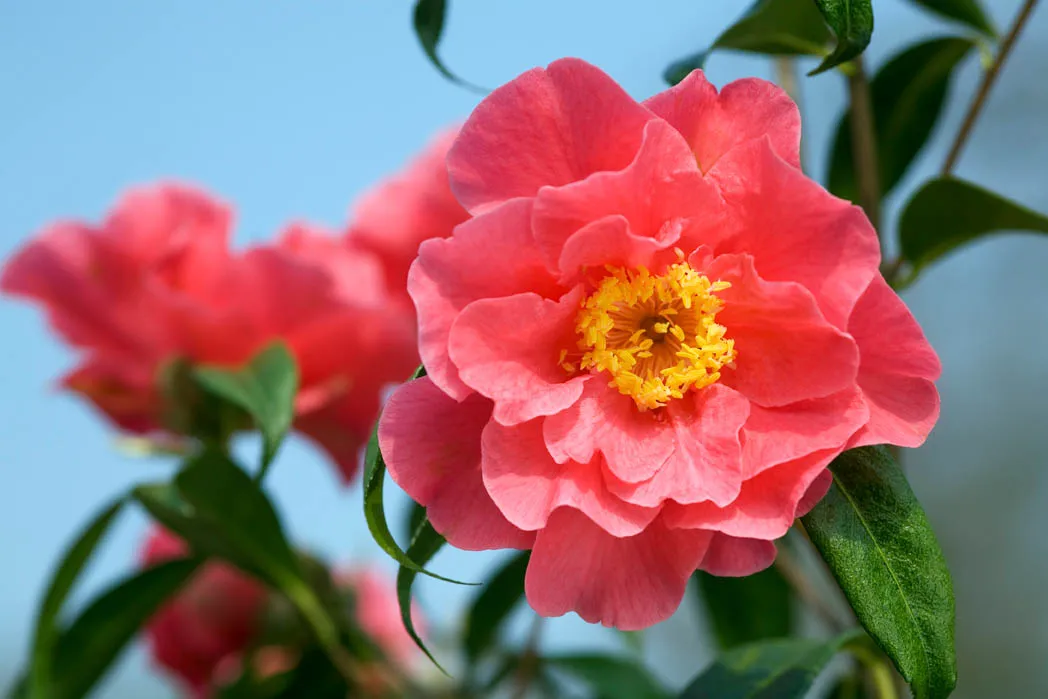
Camellias must be my favourite at this time of year. With so many varieties coming into bloom, they make the perfect alternative to the valentine rose. There are a purest white, serene pinks, deepest reds in bloom and full of buds on branches of glossy leaves. They have a long vase life and if your branches are in bud, they will bloom over the coming weeks if you keep the water fresh. As an alternative, give as a potted plant to give joy in a pot or border for year after year.
Hellebore
Browse hellebores at Crocus
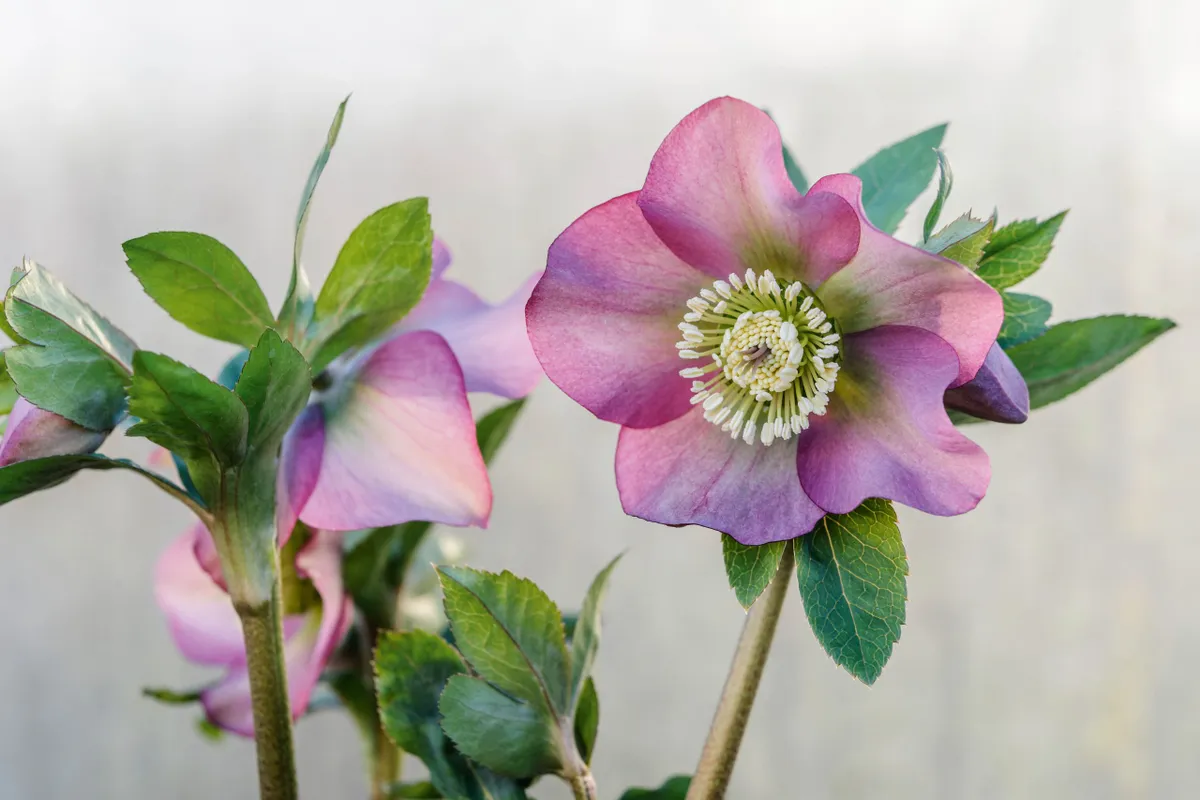
Hellebores are growing in popularity in the gardening and floristry world. There are so many varieties that bloom in February from the later flowering Helleborus niger to the early flowering Helleborus orientalis varieties. Their ethereal blooms provide such an unusual addition to a vase or bouquet, often stealing the limelight from the other flowers. They are great for pollinators in the garden, so giving a plant as a gift is a romantic gesture for the garden lover. Try floating the flower heads in a bowl of water for a romantic addition to the dinner table.
Don't miss our hellebore care guide
Hyacinths
Buy a hyacinth arrangement from Appleyard Flowers (£29.99), Bloom (£37.50), Flowerbx (£50.00)
Buy a hyacinth planter from Bunches (£22.50), Interflora (£40.00)
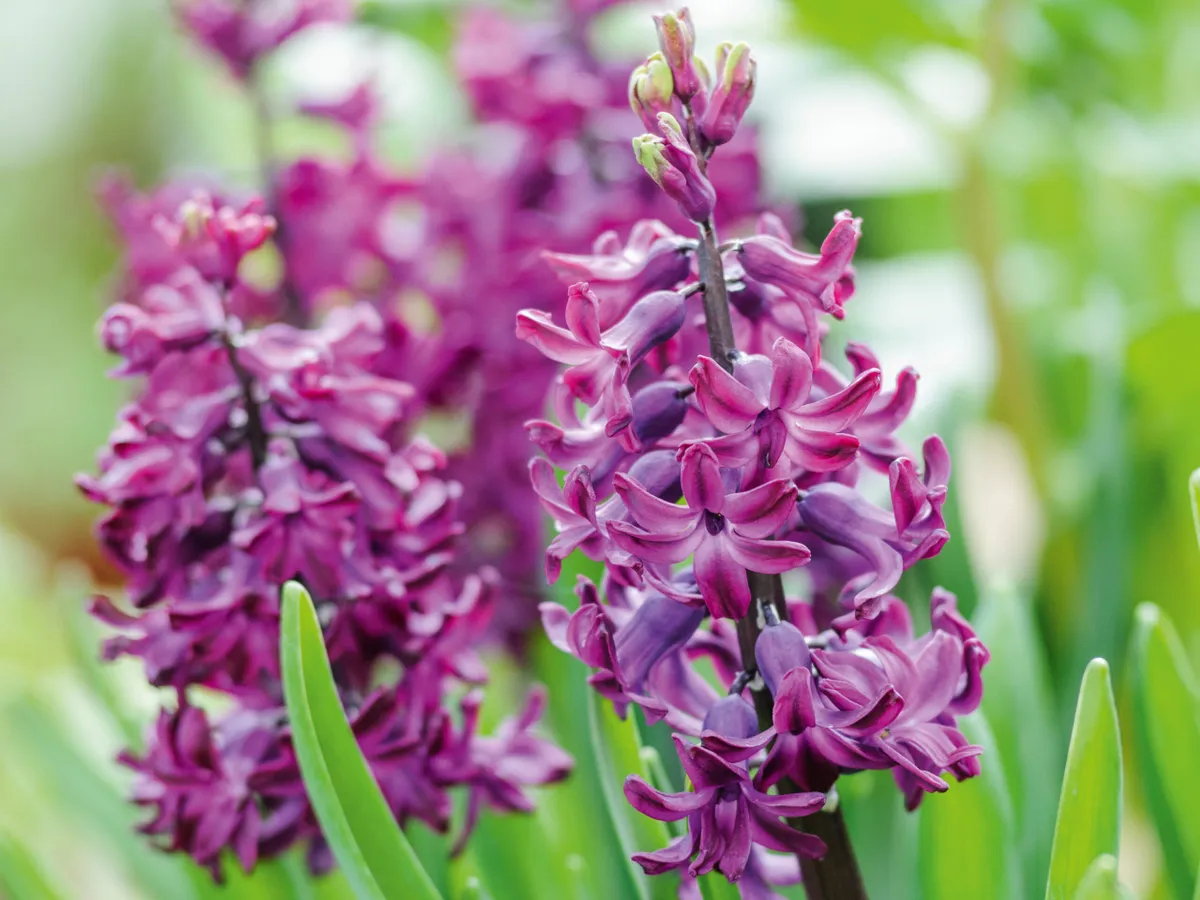
The gift of potted bulbs is a great alternative to a Valentine’s bouquet. Hyacinths are packed full of beautiful scent and can be planted into the garden after they have flowered indoors. For the classic Valentine's look, try Hyacinth 'Pink Pearl', or a dark and sultry 'Woodstock' for something different. They may also be available as a cut flower and can make the perfect addition to a spring bouquet of seasonal blooms.
Here's more on how to grow hyacinth
Ranunculus
Buy ranunculus bouquets from Bloom (£54.00), Flowerbx (£80.00)
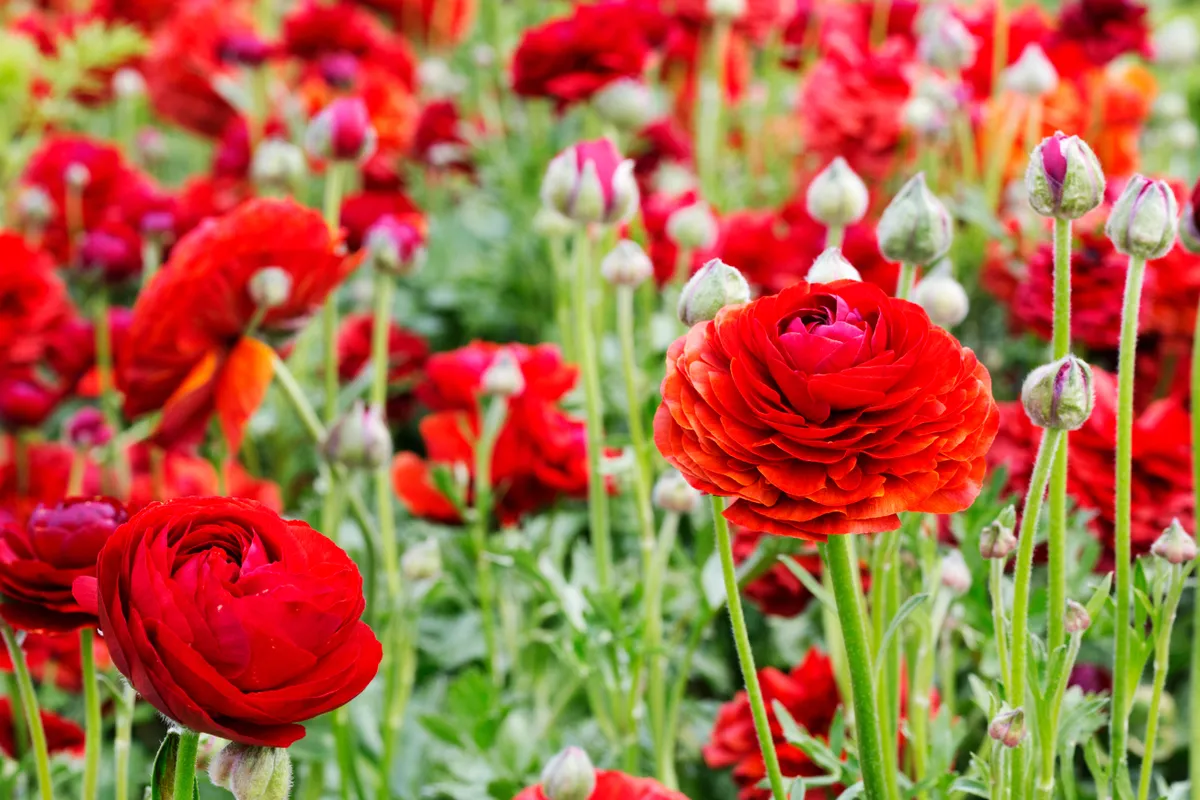
Many British flower growers offer ranunculus at this time of year (normally grown under glass). Producing lush foliage and stunning rose-clustered blooms from spring to early summer, ranunculi come in a huge range of colours and shapes. They look fantastic growing through beds and borders or planted en masse in patio containers. The flowers are also ideal for cutting, and last for weeks in a vase. The varieties available are becoming more refined, with choices of blush, pinks, and whites to complement the classic Valentine's colour scheme.
Anemone coronaria
Buy 'Harmony Blue', 'Harmony Scarlet' and 'Harmony Orchid' varieties at Crocus (£18.99)
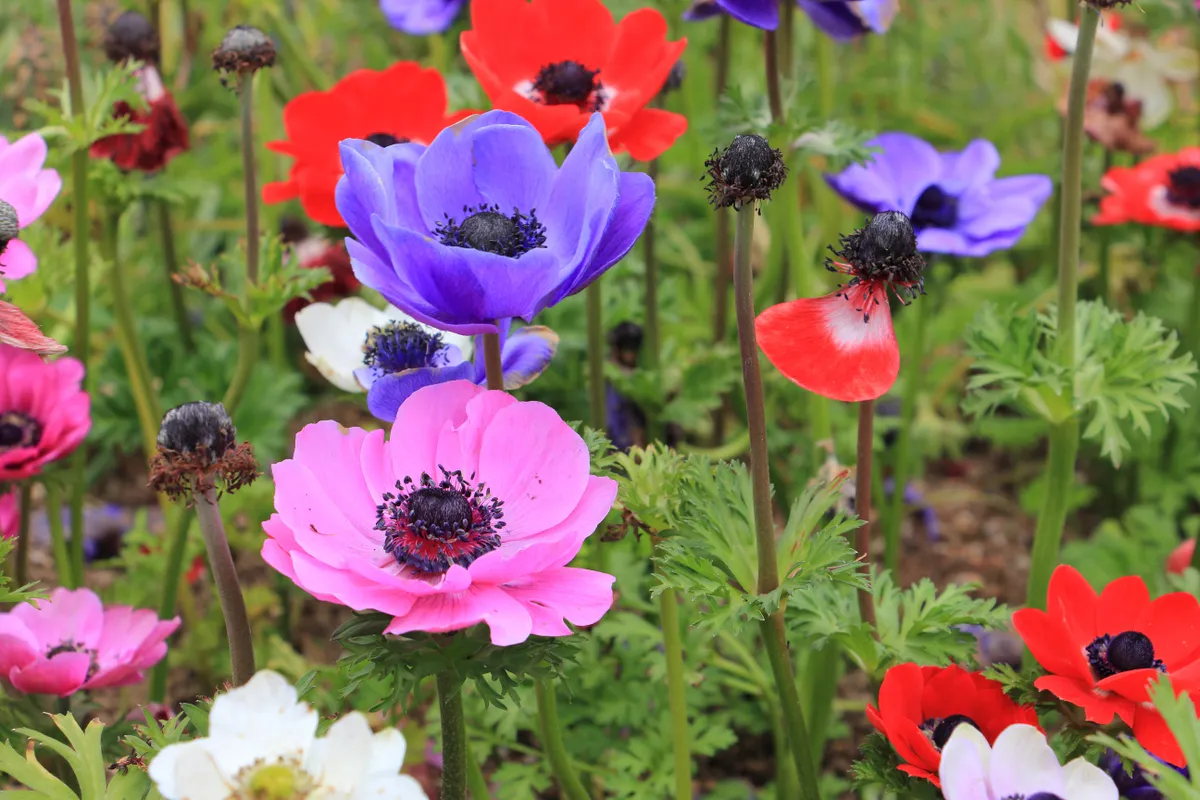
Often coming into flower in late winter under glass, Anemone coronaria flowers are a great alternative to red roses. These are becoming increasingly available from growers in Cornwall and beyond. These poppy flowered anemones will add a splash of Mediterranean colour to your early spring garden. Vivid purples, lilacs and reds are softened by whites and pale pinks, making them a much-loved cut flower, especially when there is little else about; you may be lucky enough to get a red flower or two in a bunch.
Tulips
Buy tulip bouquets from M&S (£25.00), Bloom & Wild (£27.00) and Flowerbx (£45.00)
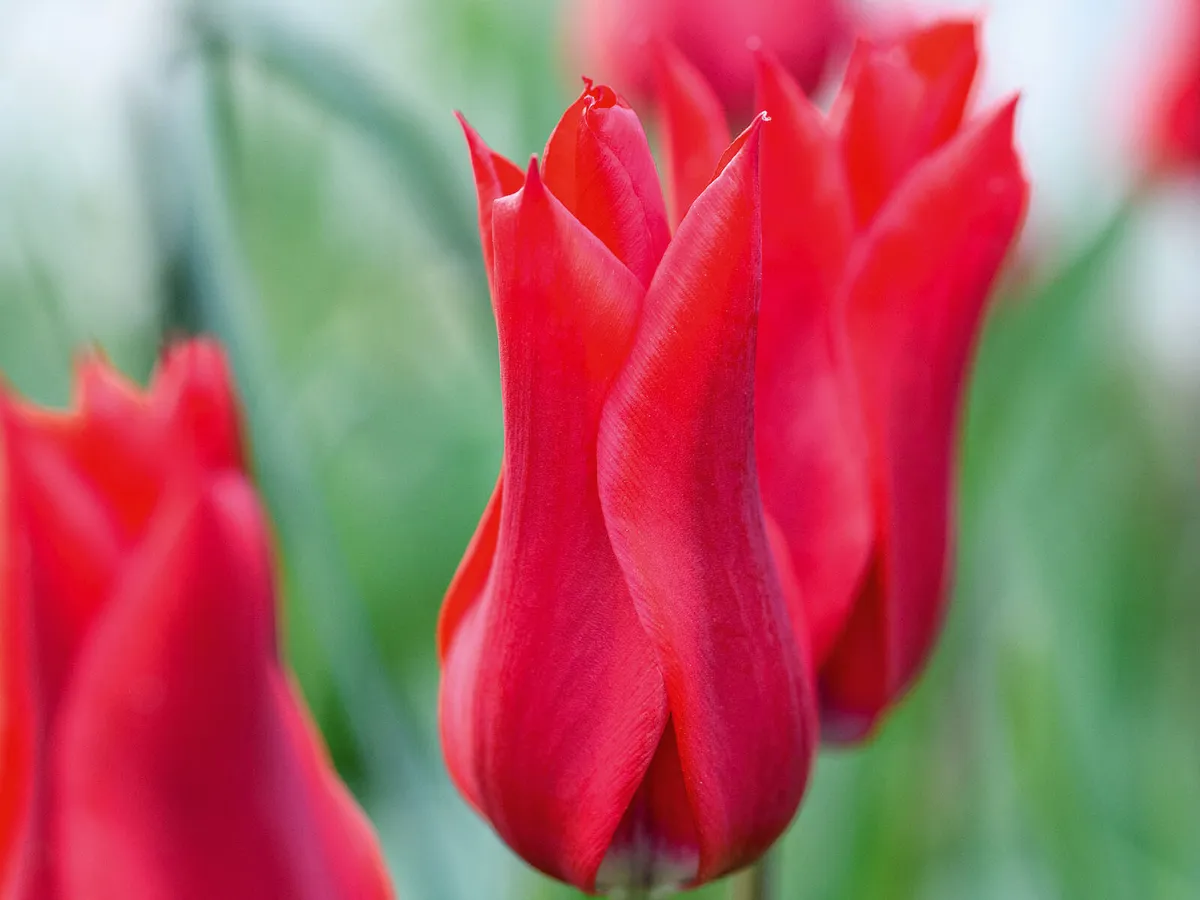
A stalwart of the spring garden, tulips are also grown as a widely available cut flower during the winter months in the UK. In floriography, a red tulip signifies ‘a declaration of love’ and a bunch signifies ‘love and passion’, with many other colours veiled in secret meanings. Potted tulips are available from most nurseries at this time of year, with a wide range to choose from parrot, single and double varieties. These stately blooms can be potted up and forced into flower in a greenhouse, to be brought inside to bloom. Alternatively, they can be planted into a border or pot to flower later in the spring.
Narcissus
Buy narcissus bouquets from M&S (£25.00), Flying Flowers (£27.00)
Buy narcissus planters from Waitrose Garden (£25.00), Interflora (£30.00)
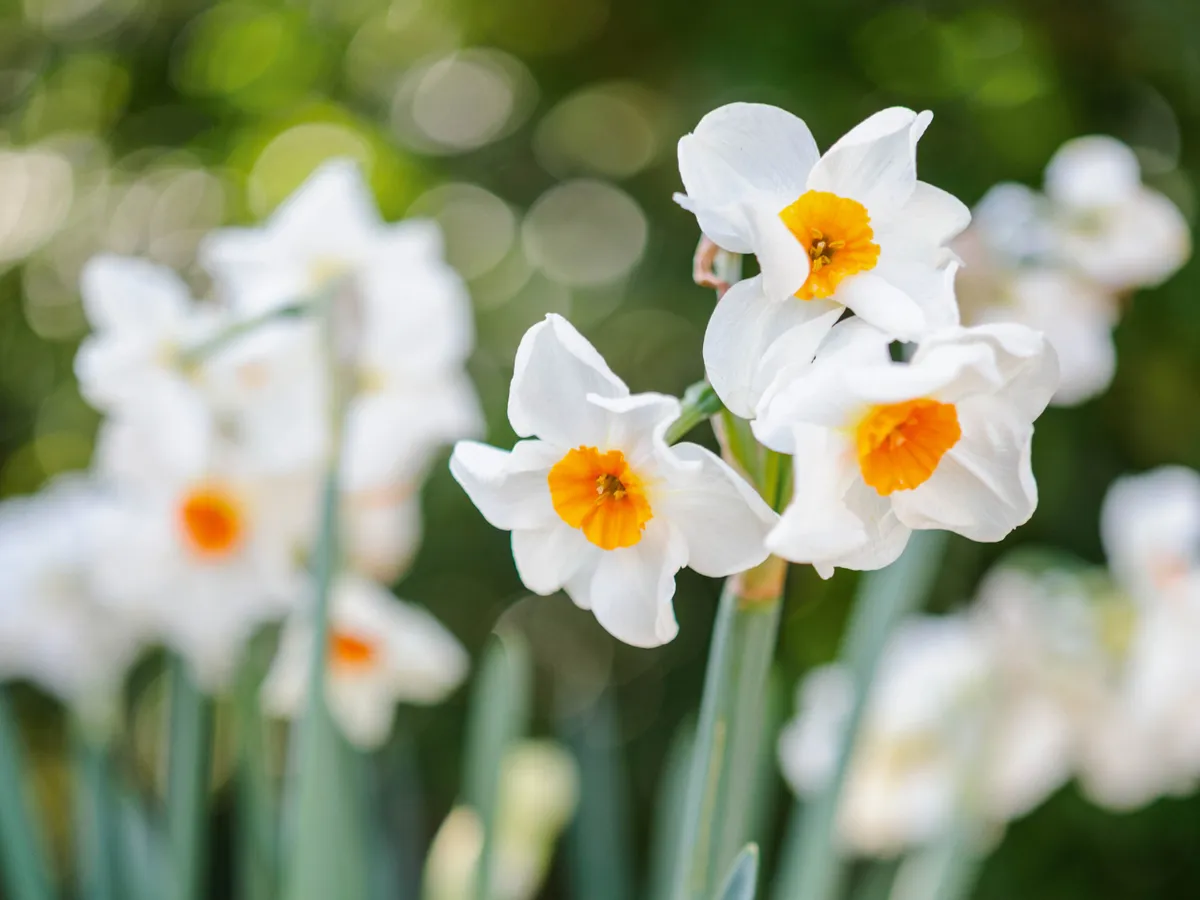
There is a huge variety of Narcissus (daffodil) available over the Valentine’s period as both a cut flower and potted plant. As a cut flower, bunches grown in the Isles of Scilly and Cornwall are available through mail order and delivered direct to your door. Alternatively, they are available at many florists, garden centres and supermarkets. Potted varieties also make a great romantic gesture, with paperwhite narcissi and Narcissus 'Bridal Crown' being proven winners as indoor-flowering varieties, with intoxicating scent. For outdoor flowering, try 'February Gold' or 'Jetfire' for early flowers that make perfect cut flowers for a vase.
Don't miss our narcissi grow guide
Early blossom
Browse cherry blossom trees at Crocus and Primrose
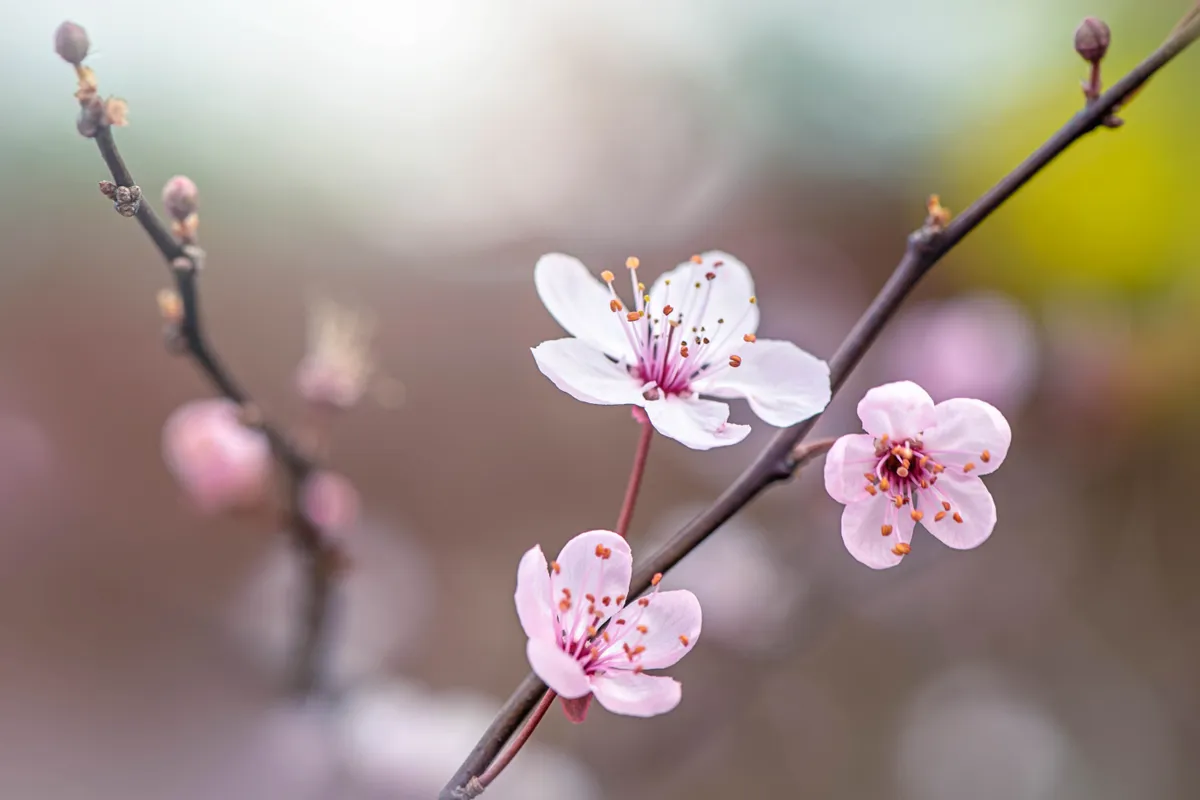
The first buds of spring blossom will come into bloom during February in warmer parts of the country. Early flowering plum varieties such as Prunus cerasifera, or blackthorn, put on a dazzling display of flowers in both the garden and vase. Grown as a tree, they can be a great addition to the garden for wildlife, producing both flowers and fruit. An armful of branches plunged into warm water can force them into flower to create a beautiful display when arranged in a vase. Alternatively, the gift of a tree will give joy for many years to come.
Magnolia
Browse magnolia trees at Gardening Express, Thompson & Morgan and Primrose
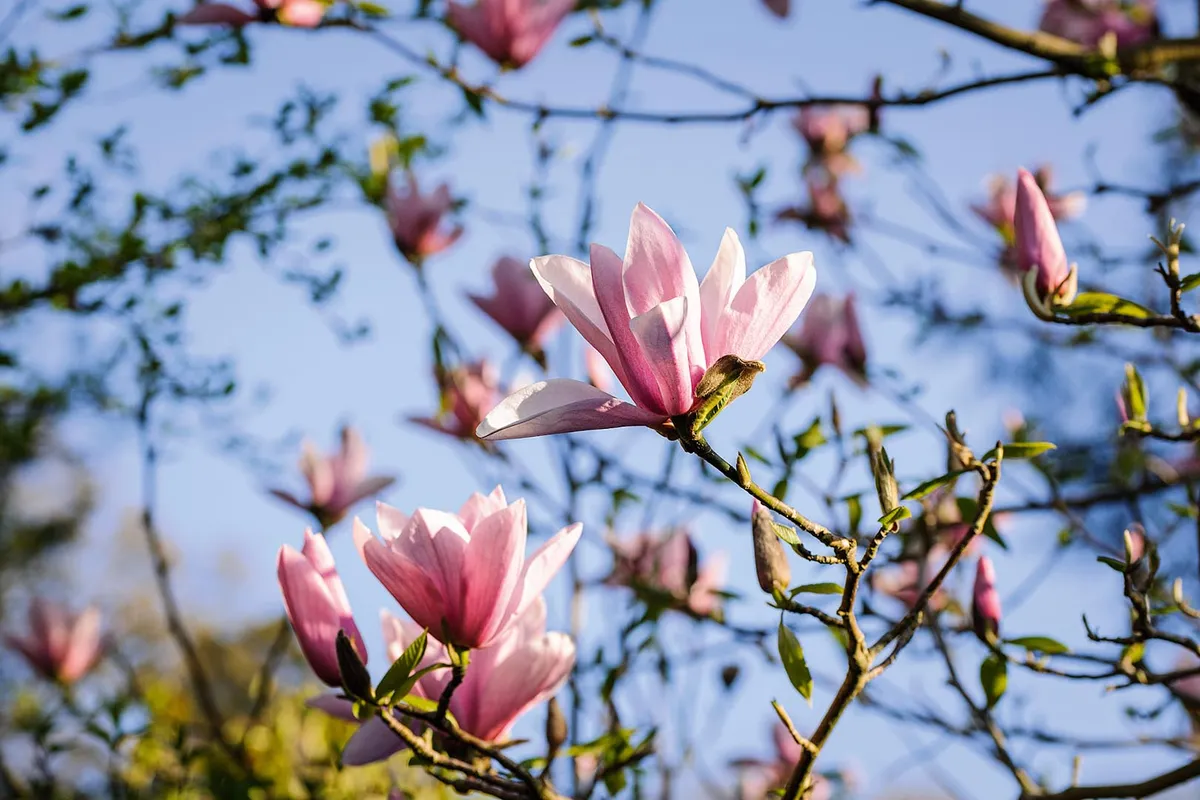
Although magnolias flower in March/April, they are also popular additions to floral displays during the winter. Like the afore mentioned blossom, they can be easily forced into flower by plunging the stems tepid water in warm room. If you should choose to give a tree, Magnolia stellata is perfect for a small garden with dainty and lightly scented star-like flowers. For a larger space Magnolia ‘Heaven Scent’ has cup-shaped flowers with nine rosy-pink tepals, soon fading to pale pink with a magenta central stripe on the outside. The buds are also attractive in a winter garden setting.
Don't miss our yellow magnolia plant profile
Snowdrops
Browse snowdrops at Crocus

Snowdrops truly represent the month of February, where they will be bursting into flower across the country. While the tiny stems are never long enough for a large bouquet, they can make the perfect little posy when arranged with the aromatic foliage of myrtle or winter box (Sarcococca). Potted snowdrops are widely available from garden centres and look pretty in a collection of Victorian terracotta pots decorated with moss. After flowering they can be planted in the garden to multiply over the following years.
As an alternative, Snowdrops can be bought by mail order ‘in the green’ for immediate planting in the garden. Unusual cultivars can be eye-wateringly expensive but more common varieties such as Galanthus nivalis or Galanthus nivalis ‘Flore Pleno’ will give you a beautiful and abundant display in subsquent years.
www.petershamnurseries.com